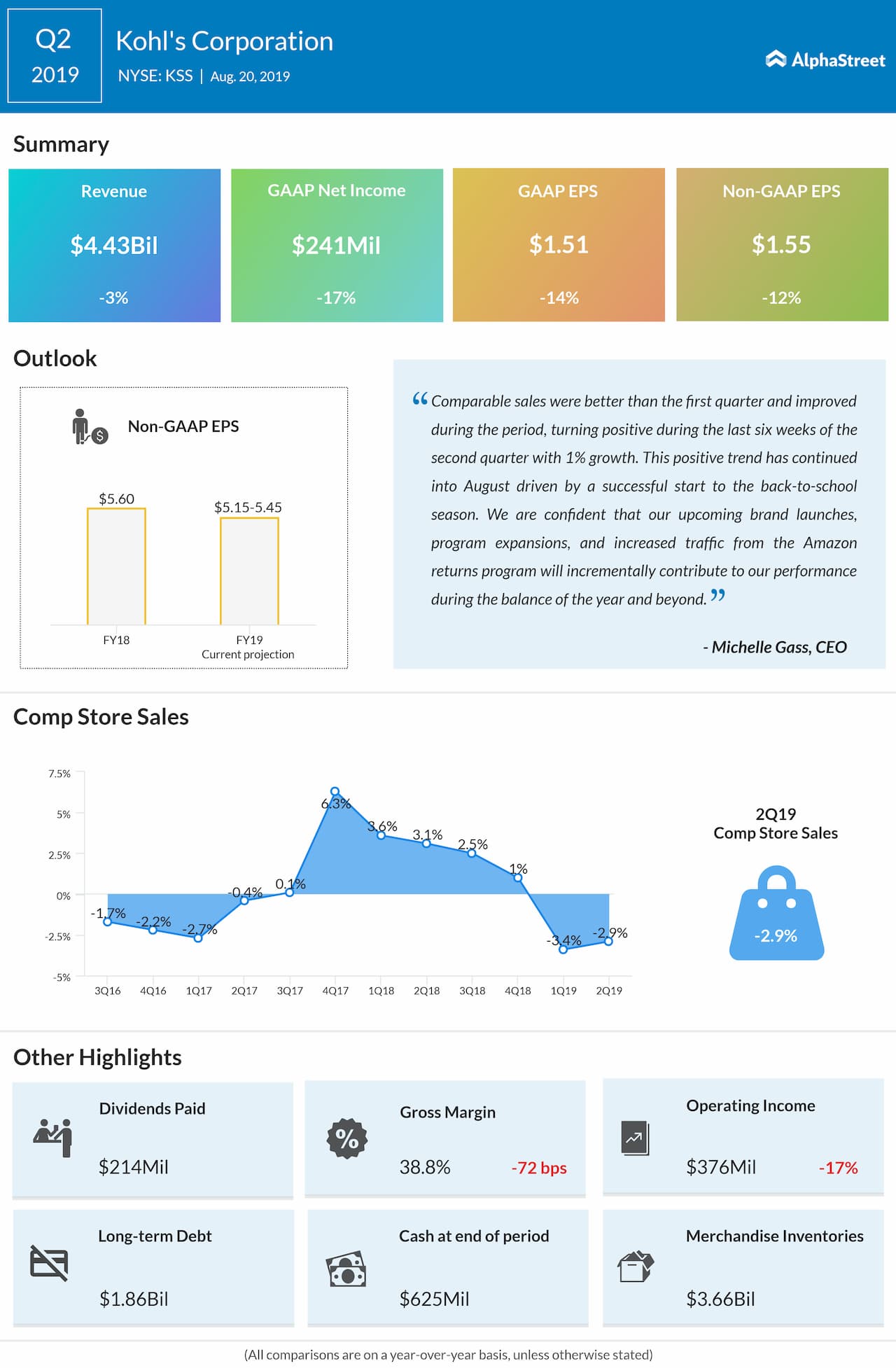Kohl’s Corporation (NYSE: KSS) reported a 17% decrease in earnings for the second quarter as lower comparable sales hurt the top line. However, the results exceeded analysts’ expectations.
Net income dropped by 17% to $241 million or $1.51 per share. Adjusted earnings decreased by 12% to $1.55 per share.
Revenue declined by 3.1% to $4.43 billion as comparable sales fell 2.9% year-over-year. Comparable sales were better than the first quarter and improved during the period, turning positive during the last six weeks of the second quarter with 1% growth. This positive trend has continued into August driven by a successful start to the back-to-school season.
Looking ahead into the full year 2019, the company affirmed its earnings guidance in the range of $5.15 to $5.45 per share. This excludes $0.26 per share related to Impairments, store closing and other costs recognized in the first six months of 2019.
The company remained confident that its upcoming brand launches, program expansions, and increased traffic from the Amazon returns program will incrementally contribute to its performance during the balance of the year and beyond.
On August 13, the company’s board declared a quarterly cash dividend on its common stock of $0.67 per share. The dividend is payable on September 25, 2019, to shareholders of record at the close of business on September 11, 2019.
Read: Lowe’s Q2 earnings preview
As of August 3, 2019, Kohl’s has a long-term debt of $1.86 billion while it had only $625 million of cash and cash equivalents. The total current assets decreased by 7% to $4.68 billion while total current liabilities rose by 3% to $2.84 billion. The total debt-to-equity ratio is at 1.11 and this means the company is aggressive in financing its growth with debt.
The company’s business is dependent on its ability to anticipate fluctuations in consumer demand for a wide variety of merchandise. A slowdown in the US economy or uncertain economic outlook could adversely impact consumer spending habits.
Consumer spending habits, including merchandise spending, are impacted by many factors including prevailing economic conditions, levels of employment, salaries and wage rates, prevailing interest rates, housing costs, and energy and fuel costs. This also includes income tax rates and policies, consumer confidence, consumer perception of economic conditions, and the consumer’s disposable income, credit availability and debt levels.
Most Popular
CCL Earnings: Highlights of Carnival Corporation’s Q4 2025 results
Cruise operator Carnival Corporation & plc (NYSE: CCL) on Friday reported an increase in revenue and adjusted earnings for the fourth quarter of fiscal 2025. Earnings topped analysts' expectations. Revenues
Lamb Weston (LW) Q2 2026 Earnings: Key financials and quarterly highlights
Lamb Weston Holdings, Inc. (NYSE: LW) reported its second quarter 2026 earnings results today. Net sales inched up 1% year-over-year to $1.62 billion. Net sales at constant currency remained flat.
Paychex reports higher Q2 FY26 revenue and earnings; EPS beats estimates
Paychex Inc. (NASDAQ: PAYX) on Friday reported stronger-than-expected adjusted earnings for the second quarter of fiscal 2026. Revenues grew 18% year-over-year. The Rochester-based human capital management solutions provider reported revenues

Comments
Comments are closed.